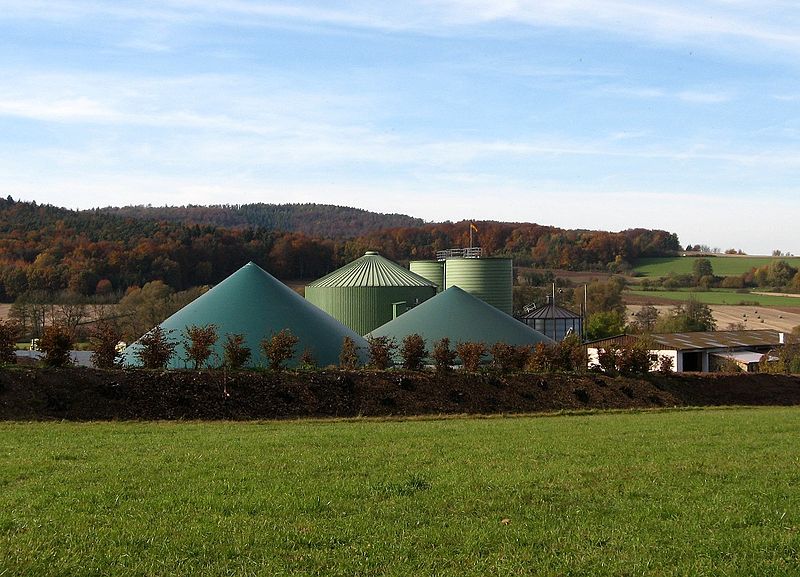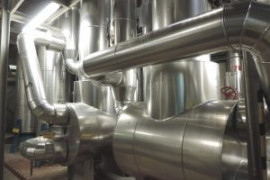
The use of biogas is growing slowly: today even a part of the gas transportation system is now supplied by biogas! What are the implications of biogas for district heating networks in the future? Want to learn more about methane? DHC News aims to answer the 5 most common questions about this new technology.
What is anaerobic digestion?
Methanisation or anaerobic digestion is a technology based on the degradation of organic material by micro-organisms. This takes place under controlled conditions and in the absence of oxygen, hence the name anaerobic digestion – in contrast to composting is an aerobic chemical reaction (outdoors).
Anaerobic digestion produces two types of elements:
Digestate, a moist, rich in organic matter partially stabilized. Digestate can possibly go through a composting maturation phase, and then return to the ground.
Biogas, a water saturated gaseous mixture composed of 50 to 70% of methane (CH4), from 20 to 50% carbon dioxide (CO2) and traces of other gases – ammonia (NH3), dinitrogen N2 and hydrogen sulfide (H2S).
The main advantages of biogas? This process produces few greenhouse gas emissions; it also reduces the amount of organic waste to be processed through other channels; it offers a double recovery of organic matter and energy.
remains two main drawbacks: the cost of facilities (installation of biogas Chagny, for example, an investment of 44 million euros and ten years of preparation) and the difficulty to ensure a sufficiency of resources methanised.
What types of waste are concerned in this process?
Many different forms of waste can be involved in biogas production. The waste can originate from sources such as:
Agricultural: animal dung, crop residues …
agro-industrial abattoirs, wineries, dairies, cheese …
industrial: chemical production facilities, pharmaceutical …
Municipal: grass clippings, garbage …
Basically, all organic materials are likely to be broken down by anaerobic digestion and produce biogas!
What do we do with the biogas produced by anaerobic digestion?
The biogas can be used for many processes. The first: the heat. Biogas indeed presents an interesting energy efficiency, as the heat demand is large and located close to limit transportation costs. Then, the biogas can be used to generate electricity – although energy efficiency is lower.
Note that biogas can also be used to produce, for cogeneration of electricity and heat. This is also where the most common biogas. Electricity is produced by a generator. The heat is then recovered – in general – the cooling system level.
A fourth “option” can see it being used as vehicle fuel. He must then undergo a series of purification steps / compression. If this possibility is much more developed in Northern Europe, France should follow quickly.
Finally, biogas can be injected into the natural gas network. Again, it is the countries of Northern Europe (Sweden, Netherlands, Germany …) which are the most advanced in the field.
Where are we in the use of biogas in Europe?
It progresses! In 2012, 241 production sites and biogas were identified on the continent by the Atlas Biogas. today there are at least 848, including 578 in France. Methanation between unquestionably in manners; France has also hosted in March 2015 Biogas lounge Europe.
As for heat networks, traffic large-scale examples are still few. Biogas represents and 2.6% of the final consumption of thermal renewable energy for heat production. Nevertheless, there are several examples of small heating networks powered by biogas, for example those of Pernay, in Indre-et-Loire, benefiting 1,000 residents, and Plessis-Gassot, where 23 homes are powered by the gas coming from a household waste landfill.
Biogas is therefore a credible source of energy for the future, provided settle some technical constraints. But this is probably as often in innovation, a matter of time!
Image source : Dirk Schmidt (wikimedia commons)







